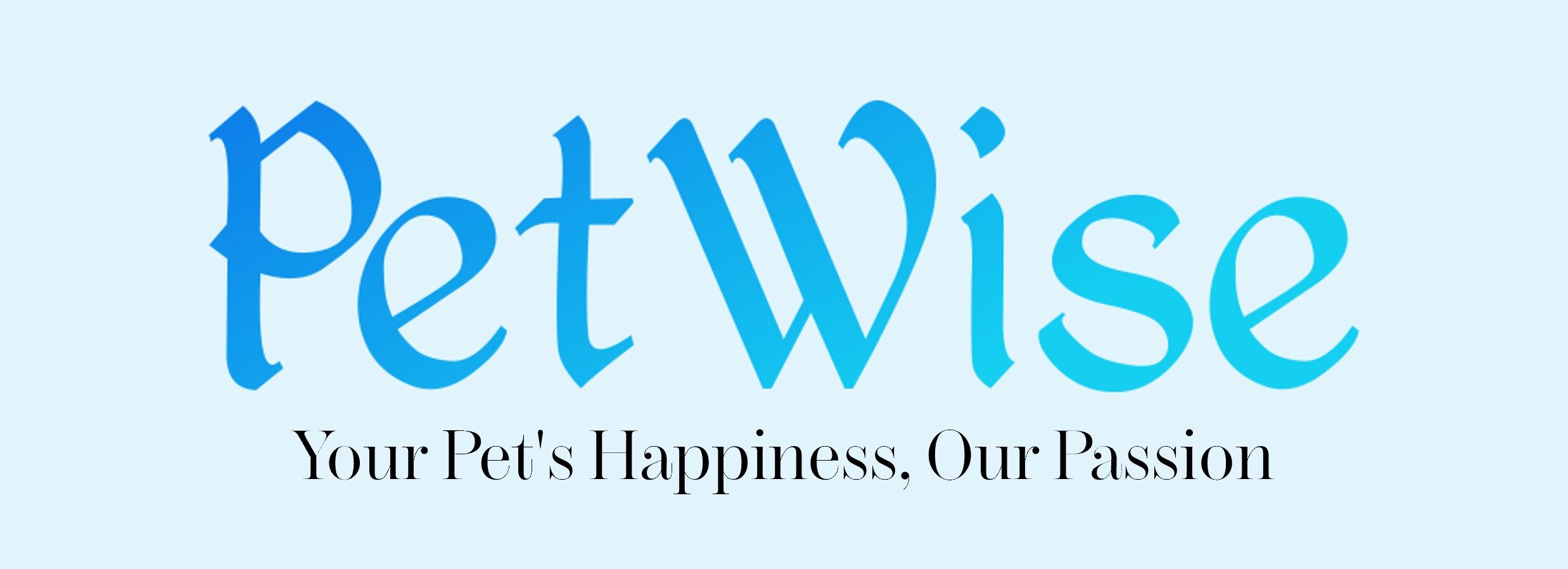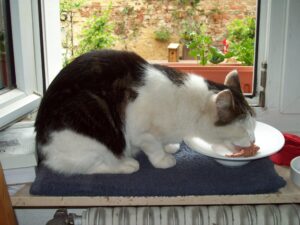Article-at-a-Glance: Unleash Brain Power with Interactive Dog Toys
Interactive dog toys are essential for providing mental stimulation and preventing boredom.
Puzzle toys, treat-dispensing toys, and intelligent plush toys are among the best for cognitive enhancement.
Regular play with these toys can improve problem-solving abilities and reduce destructive behavior.
It’s important to match the toy to your dog’s personality, considering factors like size, age, and chewing habits.
By engaging with interactive toys, dogs can experience improved mental health and a stronger bond with their owners.
Dogs learn through stimulation. Engaging them in interactive play trains their brain to respond to cues in ways that benefit them and their people. They crave physical and mental challenges – it is how they learn about their environment and how to adjust to the different scenarios life throws at them.
Mental stimulus is equally as important as the physical side of keeping your dog healthy and boredom free. Mental fatigue can be just as satisfying for your pooch as a run in the park.
As a responsible pet parent, you know that a tired dog is a happy dog. But did you know that mental fatigue can be just as satisfying for your pup as a good run? It’s true! And that’s precisely what interactive dog toys offer—a brain workout that leaves your dog content and calm.
Unlock Your Dog’s Potential: The Role of Interactive Toys
Interactive dog toys are more than just a way to pass the time. They challenge your dog’s intellect, providing a puzzle for them to solve or a task to complete. This not only keeps them engaged but also teaches them persistence and problem-solving, which are crucial for a healthy canine mind.
Lights, puzzles, touch pads, verbal and tactile rewards are just a few examples of how to keep you pet mentally active and playful. Different dogs react to different stimuli and it’s easy to find which one works best for your sweet critter.
Why Mental Stimulation Matters for Dogs
Just like humans, dogs need to keep their brains active to stay mentally fit. Mental stimulation prevents boredom and can alleviate the stress that often leads to destructive behaviors.
Have you ever come home to find your favorite shoes knawed into oblivion. Or the bottom rung of a chair poxed with tiny tooth marks? Or my personal favorite, the couch cushion’s innards spewn across the living room floor?
When dogs are left to their own devices, without appropriate outlets for their energy, they might turn to chewing furniture or digging up the garden. But with the right interactive toys, they can channel their energy into positive play.
The Connection Between Playtime and Cognitive Health
Playtime isn’t just fun; it’s a foundation for good health. Regular interaction with toys that stimulate the mind can improve your dog’s cognitive functions. Who doesn’t want a smarter canine companion with a better memory, improved attention, and is a quicker learner?
Brain-Boosting Toy Types To Know
There’s a vast array of interactive toys on the market, each designed to tap into different aspects of your dog’s intelligence and instincts. Let’s explore some of the most effective types for brain training and cognitive enhancement.
Here are some ideas:
Puzzle Toys: Engaging the Canine Mind
Puzzle toys are a fantastic way to stimulate your dog’s brain. They come in various shapes and sizes, with different levels of difficulty to suit all dogs, from the curious puppy to the wise old pooch.
Sliding Puzzles
Sliding puzzles usually consist of movable pieces that hide treats. Your dog will need to figure out how to slide these pieces with their nose or paws to reveal the hidden reward. This type of toy is excellent for encouraging problem-solving skills and persistence.
Treat Mazes
Treat mazes are a bit more complex, requiring your dog to navigate a labyrinth to get their snack. It’s a great way to engage their sense of smell and their brains. Plus, it’s a blast watching them figure it out!
Treat-Dispensing Gear: Reward-Based Learning
Treat-dispensing toys are brilliant for dogs that are motivated by food. These toys release treats as your dog plays with them, providing instant gratification for their efforts.
Interactive Balls
Some balls are designed to be filled with treats, which are dispensed as the ball is rolled around. It’s a simple concept, but it encourages your dog to keep moving and thinking.
Food-Dispensing Chew Toys
For the chewers out there, food-dispensing chew toys are a match made in heaven. They combine the satisfaction of chewing with the challenge of getting to the treats inside.
Intelligent Plush Toys: Soft Yet Stimulating
Who says plush toys are just for cuddling? Intelligent plush toys often come with built-in puzzles that challenge your dog to use their brain. They’re perfect for dogs who prefer a softer touch.
Hide-and-Seek Challenges
These toys typically involve hiding smaller toys inside a larger one. Your dog must figure out how to remove the small toys, which usually involves some shaking, pawing, and nosing around.
Remember, the goal is to challenge your dog but not frustrate them. So, start with simpler toys and gradually increase the difficulty as they get the hang of it. This way, you’ll keep their brain working and their tail wagging.
Squeaky Puzzle Plushies
For those pups who love a good squeak, squeaky puzzle plushies are irresistible. They often come with multiple squeakers and parts that challenge your dog to figure out how to get the noise going. It’s not just about the sound, though; it’s about the process of exploration and discovery that really gets their neurons firing.
Maximizing Brain Gains: How to Use Interactive Toys Effectively
Having the right toys is a great start, but knowing how to use them effectively is key to maximizing your dog’s mental development. Here’s how to ensure your dog gets the most brain-boosting benefits from their interactive toys.
Creating a Routine for Play and Learning
Consistency is crucial. Establish a routine that includes daily sessions with interactive toys. This doesn’t have to be a long process; even 15 minutes of focused play can provide significant cognitive benefits. Make it a special time that your dog looks forward to every day.
Incremental Challenge Increase for Progressive Training
Start simple and gradually up the ante. Once your dog has mastered a toy, introduce a new one that’s a bit more challenging. This approach keeps them engaged and ensures that they’re always learning and growing. Think of it as a fun and rewarding school for your dog’s brain.
For example, if your dog has figured out how to roll a treat ball to get the treats, you might introduce a puzzle toy that requires them to move pieces around to find their reward. This progression keeps their minds active and sharp.
Choosing the Perfect Brain Toy for Your Furry Friend
Every dog has its own personality, peferences and dislikes. Like humans they are individual in their own way. To take that into consideration when choosing an interactive toy, puzzle, or mental challenge when training will make all the difference.
I once had a retriever mix that didn’t like to retrieve – smart as all get out, but a tad lazy. Get my drift? He was a good candidate for a toy that gave him more of a mental challenge.
So matching your choice of toys to your dog’s personality is key.
High octane canines like ball launchers while the more laid back pooch might find a mental puzzle more stimulating.
Also, think about what motivates your dog. Are they food-driven or do they seek affection? Choose toys that align with their motivation
Always Prioritize Your Dog’s Safety.
Inspect toys for any potential choking hazards or harmful materials. And durability matters, too. A toy that falls apart after a few play sessions is no good for your dog’s safety or your wallet.
For instance, a toy made of hard, durable plastic might be great for a large breed with strong jaws, but could be dangerous for a small dog that might chew it into sharp pieces.
Always consider your dog’s physical abilities when choosing a toy and consult with your vet if you’re unsure what’s appropriate.
So, choose toys that are appropriate for your dog’s size and chewing habits, and any physical limitations. Always supervise playtime, especially when introducing a new toy.
Age and Size Appropriateness
Young puppies have different needs than adult dogs or seniors. Puppies are in the prime of their learning, so they might benefit from a variety of toys that offer different challenges. Older dogs, however, might need toys that are easier on their teeth and joints.
Size also plays a role. A toy that’s too small could be a choking hazard for a large dog, while a toy that’s too big might be frustrating for a smaller dog to handle. Always check the recommended age and size on the toy’s packaging to ensure it’s a good fit for your dog.
The Pawsitive Outcomes: Benefits Beyond the Brain
Interactive dog toys do more than just give your dog’s brain a workout. They have a range of additional benefits that can improve your dog’s quality of life and your relationship with them.
understand each other, and build trust. Plus, it’s just plain fun—a chance for both of you to let loose and enjoy each other’s company.
Interactive play is a powerful way to show your dog you care, and when they solve a puzzle or master a new challenge, it’s rewarding for both of you.
Remember when you were a kid and Mom put you on the carousal at the fair and every time it went around you looked to see if your Mom was watching you have a good time. Well to a good extent dogs love to know they are pleasing their owner at the same time they are enjoying their game. They are always ready to please. These times are the building blocks of a trusting, strong relationship.
Fostering Calmer Behavior at Home
Mental exercise through interactive toys can lead to a calmer demeanor in dogs. Much like a challenging workout for us, a good brain game can tire out a pup, leading to more relaxed behavior at home. It’s an effective way to reduce the excess energy that might otherwise be spent on less desirable activities like digging or excessive barking.
When your dog spends time working on a treat-dispensing toy or solving a puzzle, they’re using up the mental energy that could otherwise lead to anxiety or stress. This is especially beneficial for dogs who spend a lot of time alone and can help prevent the development of separation anxiety or other stress-related behaviors.
Plus, working together on a puzzle or interactive game can improve communication between you and your dog. You’ll learn to read their cues and they’ll start to understand your guidance, which can make training in other areas more effective as well.
Bring Home the Fun: Top Interactive Dog Toys for Every Pup
Now that you know the why and how of interactive dog toys, let’s dive into some top picks that can bring joy and mental stimulation to your dog’s life. These toys are beloved by dogs and owners alike for their ability to entertain, challenge, and reward.
Each toy has its unique features, and what works for one dog might not be the best for another. So, consider your dog’s individual personality, preferences, and needs when making your choice.
The Classic KONG: A Versatile Favorite
The KONG is a staple in the world of dog toys for a good reason. It’s durable, versatile, and can be used in a variety of ways to keep your dog entertained. Fill it with treats, peanut butter, or even their regular kibble to turn mealtime into playtime. The unpredictable bounce also makes it perfect for a game of fetch that doubles as a brain teaser.
The Clever Pet: A High-Tech Challenge
For the tech-savvy pup, the Clever Pet a game console designed specifically for dogs. It uses lights and touch pads to create engaging puzzles that reward your dog with treats. As your dog learns, the games get more challenging, providing an ongoing mental workout.
The Outward Hound Puzzle Toy: Interactive Engagement
The Outward Hound Puzzle Toy is a hit with dogs who like a challenge. With various compartments and moving parts, your dog will enjoy the thrill of discovery with each successful attempt. It’s a fantastic way to stimulate their problem-solving skills and keep them occupied for extended periods.
These toys are more than just fun; they’re a way to enrich your dog’s life with meaningful activity. But remember, the key to getting the most out of interactive toys is to rotate them regularly to keep your dog’s interest piqued.
For example, you might use the KONG as a special treat during crate training, the Clever Pet for rainy days when outdoor play isn’t an option, and the Outward Hound Puzzle Toy as a fun weekend challenge.
By providing a variety of interactive experiences, you’ll keep your dog’s mind sharp and their spirits high.
The Trixie Activity Flip Board: Advanced Problem-Solving
For dogs ready to level up, the Trixie Activity Flip Board offers an advanced puzzle that combines flips, slides, and lid lifts. This toy is ideal for smart dogs that need an extra challenge to stay engaged. It’s also a great way to slow down fast eaters by making them work for their treats.
Frequently Asked Questions: (FAQ)
How Often Should I Introduce New Interactive Toys?
Keep things fresh by introducing a new toy every few weeks to a month. This helps prevent boredom and keeps your dog’s brain engaged. However, don’t feel like you need to break the bank; you can also reintroduce old toys after a break to make them feel new again.
Are Treat-Dispensing Toys Suitable for Dogs on a Diet?
Yes, but be mindful of the treats you use. Opt for low-calorie, healthy options or use a portion of your dog’s daily kibble allowance. This way, you can keep their mind active without compromising their diet.
Can Interactive Toys Help with Separation Anxiety?
Interactive toys can be a part of a broader strategy to manage separation anxiety. They provide a distraction and can help make the time apart less stressful for your dog. However, severe cases of separation anxiety may require additional methods, such as training and desensitization techniques.
For dogs with mild separation anxiety, try giving them an interactive toy right before you leave to create a positive association with your departure.
Are There Interactive Toys for Dogs with Limited Mobility?
Yes, there are interactive toys designed to be less physically demanding. For example, scent-based games where the dog has to find treats using their nose can be a great option for dogs with mobility issues.
How Do I Clean and Maintain Interactive Dog Toys?
Most toys can be cleaned with soap and water, but always check the manufacturer’s instructions. Regular cleaning prevents the buildup of bacteria and keeps the toys safe and in good condition for longer.
Inspect toys regularly for signs of wear and tear, and replace them if they become damaged. This not only ensures your dog’s safety but also that they’re getting the most out of their playtime.




Leave a Reply